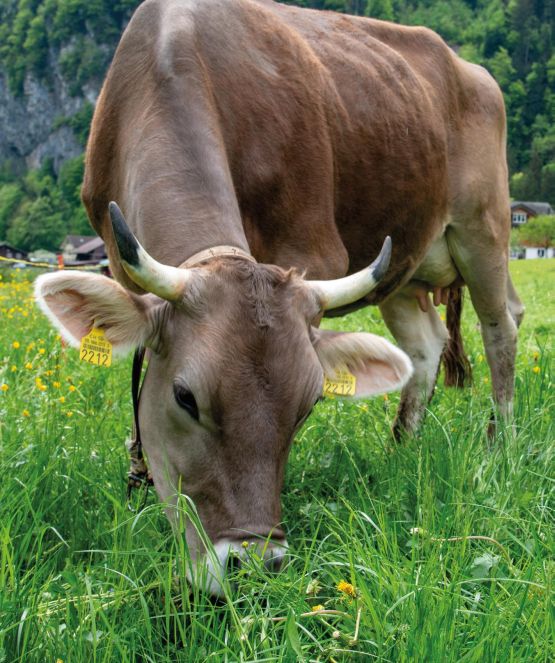Swiss dairy farmers use differing percentages of roughage and concentrates in their feed. Agroscope showed that relying for the most part on fresh grass and keeping costs under control helps farmers achieve good cost-efficiency, enabling them to produce milk a quarter to a third more economically.
Which fresh-grass systems are economically successful? This was the question examined by researchers working on the project ‘Optimisation of Grassland-Based Milk-Production Systems Based on Indoor Feeding of Fresh Herbage’. The School of Agricultural, Forestry and Food Sciences (HAFL) and the Vocational Education and Training Centre for Nature and Nutrition (BBZN) were Agroscope’s project partners in this research.
To answer the question, 36 commercial farms were divided into three pilot groups: two combined systems with indoor feeding of fresh herbage and an average of 430kg and 1160kg concentrate, respectively, plus a ‘full grazing’ system with 90kg concentrate per cow and year. Serving as the reference group was the ‘standard Swiss farm’, which spends more money on average for concentrates than the pilot groups.
“Farms producing small volumes of milk can achieve good economic results if they are able to keep costs low.”
Conclusions: When fresh grass is used, milk can be produced up to a third more cheaply in the three pilot groups than in the reference group. The biggest savings are to be found with concentrates, which are more expensive in Switzerland than in other countries. In addition to lower labour costs, we can also observe lower building costs in the pilot groups.
Full grazing pays off
In the ‘full grazing’ system, labour can be remunerated at a higher rate. What’s more, farmers are also able to produce at lower milk prices than with the two combined systems, thanks not only to lower costs, but also to higher incidental revenues (livestock sales) and direct payments per kg of milk sold.
True, farms using high amounts of concentrate produce more milk, but have no economic advantage over those using low amounts of concentrate. The reason for this is that although farms with higher production volumes have lower labour and building costs, these cannot offset the higher costs of concentrates or the lower incidental revenues per kg of milk.
Farms producing smaller volumes of milk can thus achieve very good economic results, provided that they deliberately keep the controllable costs low.
Producing more economically
All of the pilot groups produced milk 24% to 32% more economically than the reference group, and showed CHF 8 to CHF 13 more revenue per working hour. The better results are largely attributable to good management and pronounced cost-awareness.






